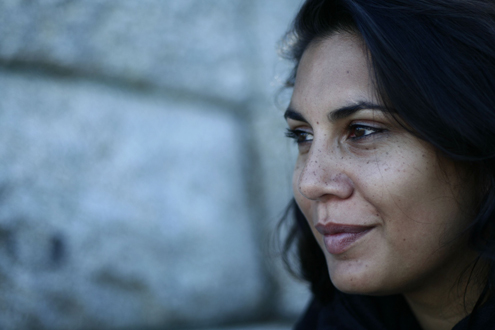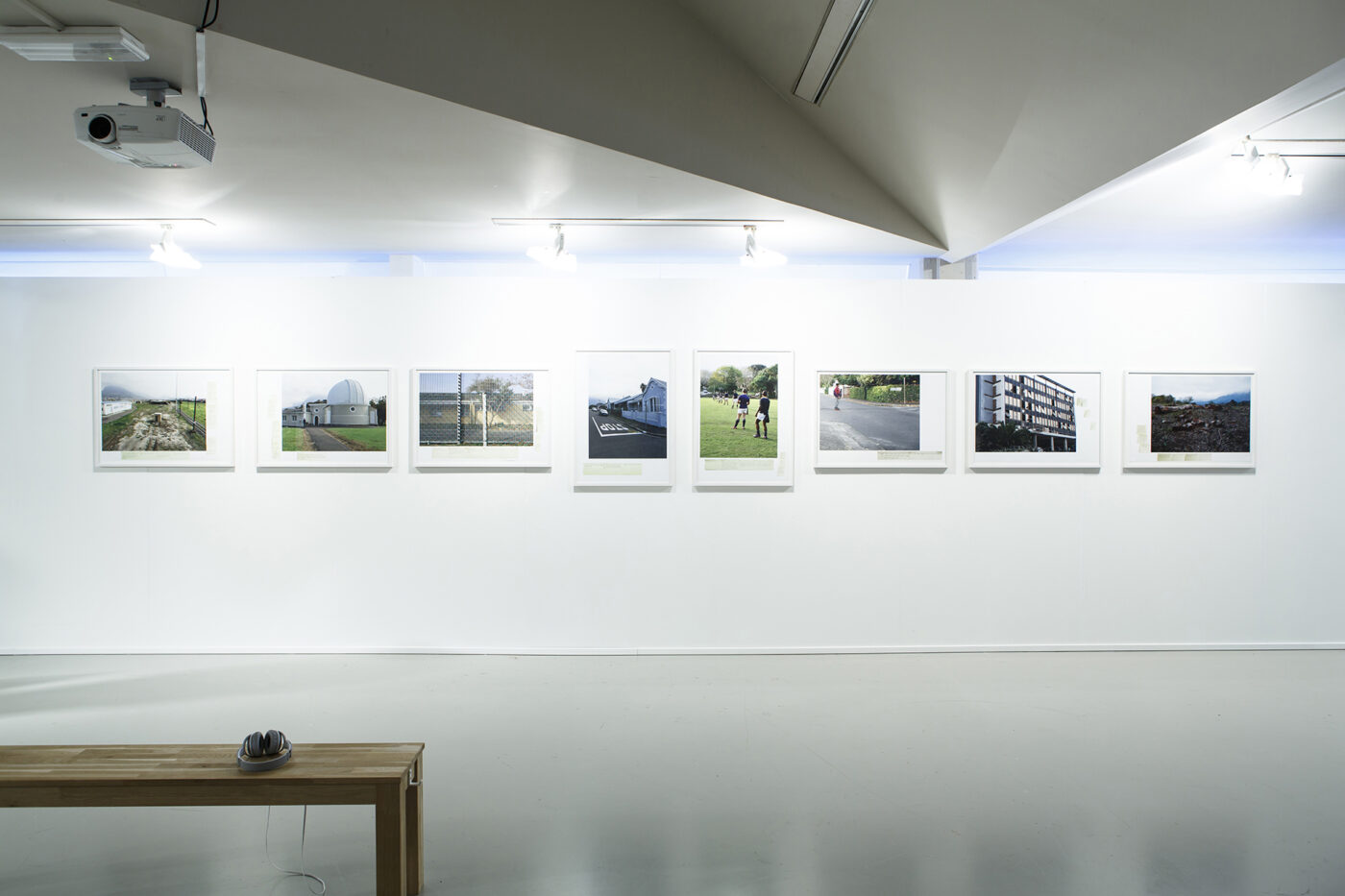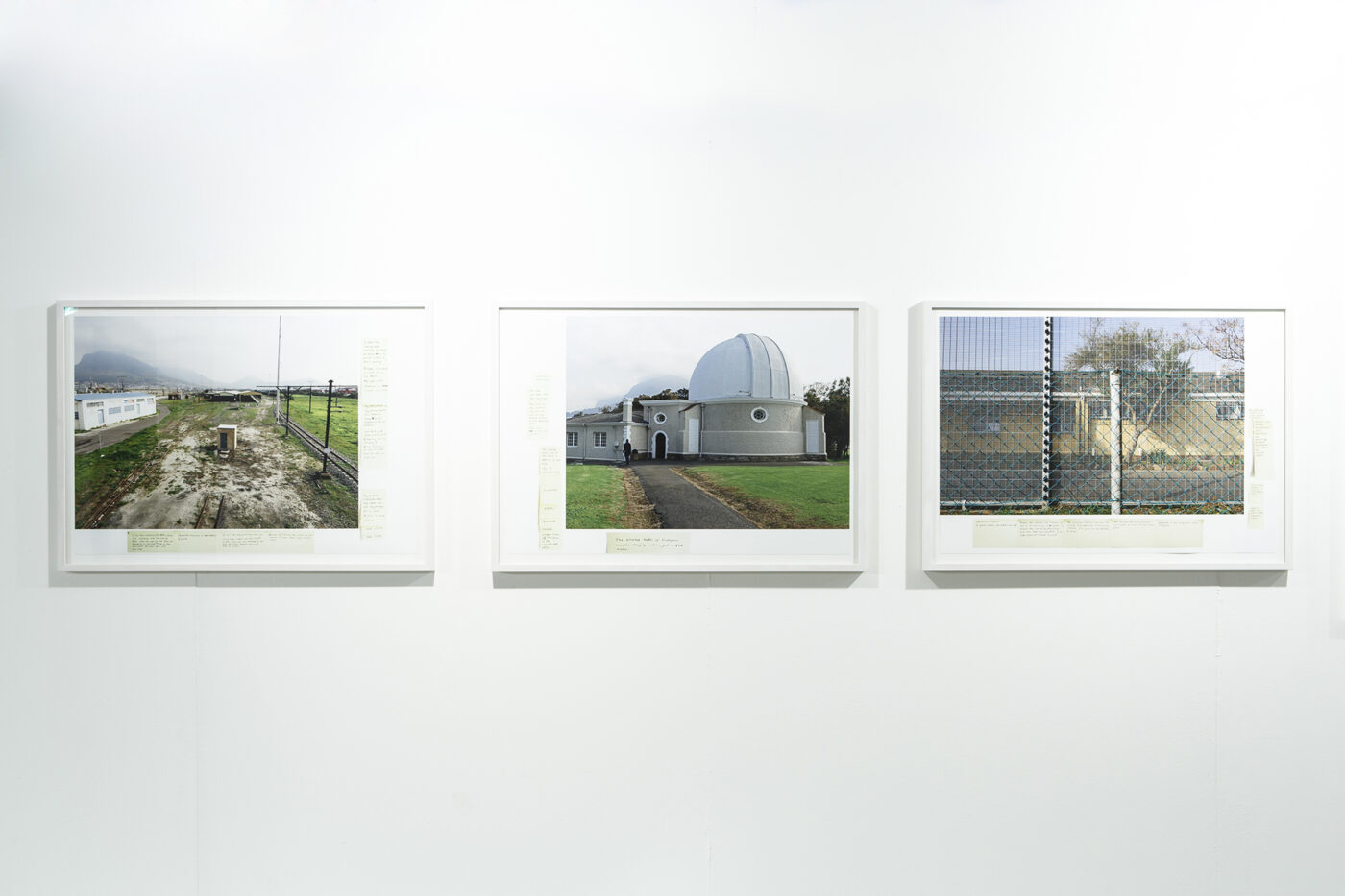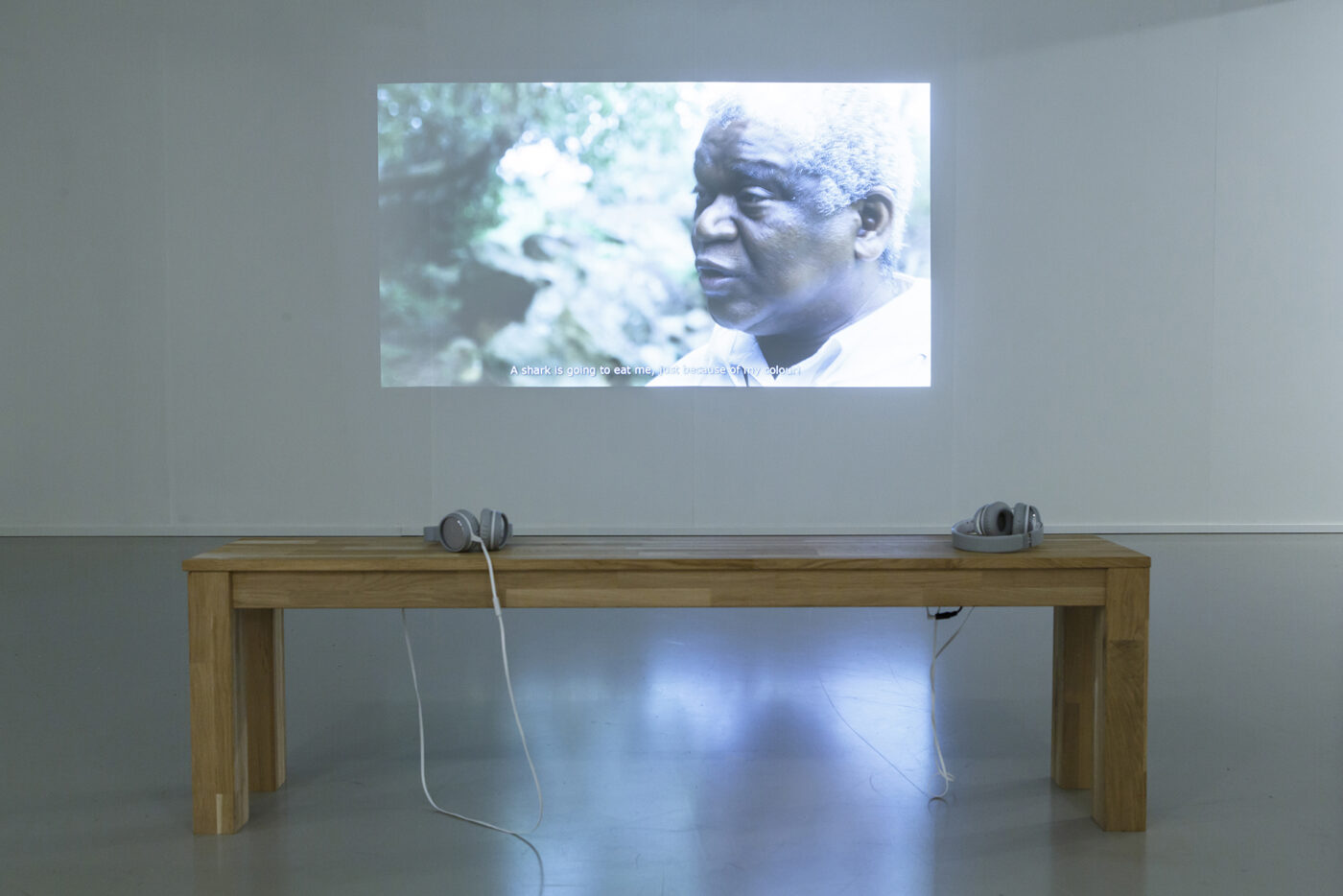Interview with Judith Westerveld about her work 'The Remnant'
Judith Westerveld (b. 1985, Den Haag, Netherlands/South Africa) grew up both in The Netherlands and South Africa. She studied fine arts at the Gerrit Rietveld Academie in Amsterdam, followed by the Master Artistic Research at the University of Amsterdam, The Netherlands.
In her art practice Westerveld researches the relation between the archive, the voice and the narrative, probing who is heard and seen, remembered and historicized. South Africa’s transition process since denouncing apartheid, the place, its colonial relations and the influence of its past in its present, forms the research field from where her artworks develop. In her research, as well as in the aesthetic construction and presentation of her work she deploys a collage way of working, gathering, connecting and juxtaposing seemingly disparate sources together.
A Hedge of Bitter Almonds
In the exhibition Re(assisting Narratives (2016) curated by Chandra Frank, two new works are presented for the first time: the video The Remnant and the photo collage series Echolocation, which are part of the artistic research project A Hedge of Bitter Almonds. In this artistic research supported by Framer Framed, I delve into the narratives that the history of the hedge holds, examining the different voices that have shaped it, as well as taking into account my own position and experiences in tracing the history and the influence of the hedge from the past to the present and back again. Through both works I aim to redistribute the fixed positions of who is listened to and can be seen, who or what is remembered and historicized.
A hedge of indigenous Wild Almond trees was planted in 1659 by VOC- employee Jan van Riebeeck. Together with a 16 km construction of wooden fence and watchtowers it formed the 25 km long eastern boundary of the Dutch colonial settlement that ran from the mouth of the Salt River through Rondebosch to Kirstenbosch in what is now Cape Town, South Africa. As the historical narrative goes, it served as a defensive barrier that was to prevent the original inhabitants, the Khoikhoi and San tribes, from raiding the colonist’s cattle.
To me, its surviving remnants in Kirstenbosch botanical garden present a monument that harbors a long history of colonial oppression, exclusion and exploitation that shapes South Africa’s present socio-political condition.The formative presence of the Dutch in this history has largely been forgotten in the Netherlands, pushed into the blind spot that encapsulates its role as a formidable imperial power.
As a child of these two countries, of the Netherlands and South Africa, I have in both spaces experienced the traces of this history in the conception of the self and the other, as well as the denial of these traces. This forgotten part of Dutch history is part of a large array of missing, denied, erased, foreclosed and tarnished voices that shape the archive of the colonial past. Voices that are stories that need to be told, pulled from the shadows of the archive to illuminate the unrelenting influence of the colonial past on the present. As an artist of these two countries, I interrogate this interwoven history that has shaped my cultural identity and tell the story of Van Riebeeck’s Hedge.
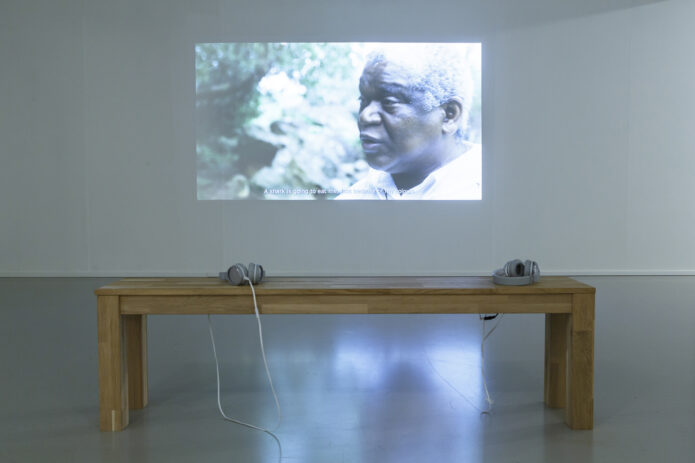
Judith Westerveld, The Remnant, 19 min 45 sec, single channel HD video, supported by Framer Framed. Photo: Eva Broekema / Framer Framed
The Remnant
The stories of two men, one a botanist and the other a tour guide, both working at Kirstenbosch botanical garden in South Africa, are interwoven. The botanist, Adam Harrower, recounts the cycles of growth and deterioration of the Wild Almond tree, bringing the natural form of these surviving remnants of Van Riebeeck’s Hedge to life. The tour guide, Andrew Jacobs, questions the official historical narrative that surrounds Van Riebeeck’s Hedge, as well as recounting the influence that the segregation laws furthered by apartheid, had on his personal life and on the lives of the people in his community. My own voice reading fragments from Jan van Riebeeck’s diary (Daghregister), which pertain to the hedge, punctuates their stories, voicing the intentions of the colonizer and the resistance of the colonized, resounding in an ‘uninhabited’ indigenous landscape.
The interchange between the different voices, as well as the aesthetic visualization of the hedge, allows for its botanical form to function as a double metaphor in the video. Its growth emphasizing the rise of segregation and its deterioration the suffering that this caused. Hereby the video aims to unveil the underlying trauma that remains compartmentalized in the personal memories and societal landscape of South Africa and the innate difficulty for the remnants of past systematic oppression and exclusion to be dissolved.
Echolocation
Through using existing historical maps depicting Van Riebeeck’s Hedge and the descriptions of its location in Jan van Riebeeck’s diary (Daghregister), I mapped out the location of the hedge in contemporary Cape Town. On the 27th of August 2015 I drove this route, tracing the hedge as closely as the urban sprawl of one-ways, highways and railways, restricted areas, public parks and private property allowed. Throughout the journey I took photographs of the landscape where the hedge used to run and noted down factual information, such as the location and the kilometer mark, as well as my personal reflections of the experiences at the site of where each photo was taken.
The signal I sent out into the landscape was a historical quest, trying to locate where the hedge used to run. Time and again, at each place I called on, the echo I received was the lineage of the hedge, a lineage of constructed barriers, restricted movement and preconceived ways of looking at one another. In other words, the places and situations that I encountered were shaped by and exemplary of the spatial violence of a segregated society. The fear I felt being in certain places, the presence or absence of certain race groups in particular areas, the security beams restricting access or the gates around each house. Sometimes more physically, such as in the three fence-thick enclosure of Valkenberg Psychiatric Hospital and at other times more conceptually, such as the line-up of a team of rugby players on a sports field in a wealthy suburb. At all times past and present intertwining.

Judith Westerveld, Echolocation, photo series, supported by Framer Framed. Photo: Eva Broekema / Framer Framed
Chandra Frank in conversation with Judith Westerveld
Can you tell us a little more about how your work on the Jan van Riebeeck Hedge and the shared colonial relationship between South Africa and the Netherlands started?
It came about through the intertwining of two transitions,the familial and the historic, that have informed my art practice. As a child I emigrated with my family from the Netherlands to South Africa in 1997. This was a personal transition that took place during South Africa’s monumental transition from apartheid to democracy. As an artist this urged me to research South Africa’s transition process from the inside out, investigating and articulating the personal and affective dimension of this transition, the way people’s stories and experiences are voiced, being heard and remembered or silenced and forgotten.
Researching a transition means one looks simultaneously to the past, present and future, questioning what one is transitioning from, how this process is developing and where to it will lead. Hereby the place and influence of South Africa’s colonial past in its present and future became even more apparent to me. It also begged the question “What is my own position in encountering this colonial past?” As an artist whose cultural identity has been shaped by both South Africa and the Netherlands, I needed to investigate the shared colonial relationship between the Netherlands and South Africa.
Visiting Cape Town with this question budding in mind, I went to Kirstenbosch Botanical Garden, that harbored, as I had read, remnants of Van Riebeeck’s Hedge. It harbored so many contradictions that fascinated me, for example, it is an indigenous plant, a food source even, which was used to build a barrier to restrict the very people that it used to nourish. But its botanical beauty of thick interweaving branches, shrubbery and thorns also enthralled me. The more I looked at the hedge and listened to its stories, the more it became a forgotten monument to me. It makes visible and audible the many ways the past continuously works its way into the present.
You explore South Africa’s colonial past in the present and in the future, in which ways do spatiality and temporality overlap in your work?
A reoccurring theme in my work is the influence of past trauma and structural violence on present everyday life and how its traces and impact on the present are often prematurely foreclosed. I deploy a collage way of working, gathering, connecting and juxtaposing seemingly disparate sources together. Through working with archival sources and interviews that I conduct, representing different periods of time, I gather fragments of stories and testimonies that speak of the past. Examples are the Truth and Reconciliation Commission Archive, The Apartheid Archive Project or most recently, Jan van Riebeeck’s original diaries and interviews with employees of Kirstenbosch botanical garden.
In my videos and photographic collages I let these voices resound in spaces that are representative and suggestive of the present and future, such as the domestic space of the home, commonly used public places or the “uninhabited” indigenous landscape. Through re-contextualizing a certain time in a certain space or vice versa, I emphasize that banal everyday moments are formed and infected by the past and aim to make palpable the tensions that this brings forth.
Not to everyone the colonial figure Jan van Riebeeck is quite as known. In Cape Town, however, there are many visible references to Jan van Riebeeck that bring the colonial past to the fore in sometimes an ambiguous way. For instance, when Jan van Riebeeck’s legacy is commemorated through colonial nostalgia. How would you describe the different responses to Jan van Riebeeck in South Africa and the Netherlands?
In South Africa everyone knows who Jan van Riebeeck is. He is still the first page of most history textbooks, the so-called “beginning of civilization” at the Cape. Many Afrikaners still view him as the founding father of their nation. Many others view him as an intruder who marginalized and exploited their ancestors, claiming their land as his to take. Land that to this day has hardly been redistributed, caught in a judicial battle between natural ownership through birth right and ownership won by the right of the sword. In the Netherlands few people know who Jan van Riebeeck is. He is part of a forgotten history of a Dutch outpost on the most southern tip of the African continent. Not a colony, but a trade outpost is the narrative. In my eyes, this terminology contributes to negating the influential role that the Dutch played in the formation of South Africa as a nation.
My interest in interacting with this history as an artist is to reframe its voices and stories that are foreclosed, marginalized and normalized. Hereby I don’t find it productive to enter into discussions of who is to blame, or who should repent. However, the distance in time to these events or the different world-view that they were part of should not become an excuse that absolves a nation from its responsibility towards their history and how that history is told. To me, trying to contribute to a more inclusive remembrance of this history is a form of resistance and if it succeeds, a form of justice.
How does your own racialized position as a white woman artist influence your creative process and making this work in particular?
Both in South Africa and in the Netherlands I experience the traces of the colonial past in the present conception of the self and the other. In South Africa this is much more astute as the legacies of apartheid are plainly and painfully visible in the economically and racially segregated landscape. When I am there, or when I’m making a work that departs from the history that caused these divisions, I feel that my racialized position as a white woman comes into play and challenges my artistic positioning.
A good example of how this reoccurs in my artistic practice is the awareness of the thin line between emancipating and representing marginalized voices when working with the stories of others. Others that are often Black,Brown or Colored and that speak of (a history of) hurt that I can never fully understand, but am complicit in through my white privileged position. I don’t want to personally appropriate their stories in my work, as this would only silence them once more. What I am interested in is investigating moments of relation in a shared archive of the past. I can represent that archive through working with its content and meanings, its materiality, discovering its missing elements and exposing its misinterpretations. I can question where my position and the history of the Dutch colonial past interacts with the voices and stories of those others that share that history.
In this work I do this, for example, through reading and reflecting upon the diary of Jan van Riebeeck, the Daghregister that he kept to report back to the VOC about daily life at the Cape. Being able to read the diary in its original 17th century Dutch, allowed me to feel both the closeness and distance of the words, in both pronunciation and meaning, to contemporary Dutch language and culture.There are so many sentences that could have easily been uttered today, sentences that reflect an imperial mentality and rhetoric.
In the video The Remnant I read passages of the diary aloud, not only voicing the intentions of the colonizer, but also the resistance of the colonized San and Khoikhoi that is harbored within this document. Reading the archive against the grain reveals their opinions, choices and agency, albeit constrained and represented in the writing of the colonizer. I also try and find how these voices echo in the present. A good example of this in The Remnant is how Andrew Jacobs questions the official historical narrative that surrounds Van Riebeeck’s Hedge and recounts the influence that the segregation laws furthered by apartheid had on his personal life and on the lives of the people in his community. Through working with a multiplicity of voices, I try to present a new and more inclusive perspective that harbors the possibility for history to be augmented and hopefully changes our, including the Dutch, understanding of the present.
Thinking and seeing the repetition of several forms of separation barriers in your work, from hedges to gates, security fences and barbwire, I am curious how you relate this to broader pertinent issues of state surveillance, borders, control and the policing of racialized bodies?
The Van Riebeeck Hedge was the first physical man-made barrier in South Africa dividing people based on their cultural background and consequently their race. The guards in watchtowers placed along the wooden fence surveyed and controlled the movement of people, the thick trunks of the Wild Almond trees interwoven with thorn bushes prohibiting access all together. This was not a new system, nor one that has changed much in our contemporary times. From the Berlin wall, to the West Bank Barrier, to the border barriers hastily erected by many countries during the current European migrant crisis (to name but a few), the same principles apply. Namely, restricting freedom of movement and further instilling preconceived ways of looking at one another. Such physical barriers are an outward expression of a societal landscape of great distrust, fear and impending violence that form and feed the inward barriers that can easily divide people. My experience of tracing the route of Van Riebeeck’s Hedge, for the work Echolocation, is a good example of this.
This text was originally published in the exhibition catalogue.
The exhibition Re(assisting Narratives was curated by Chandra Frank, and on show at Framer Framed in Amsterdam (NL) from 28 August – 27 November 2016, and at District Six Museum ‘Homecoming Centre’ in Cape Town (SA) between November 23 – December 13 2016.
The Remnant will be shown at Encounters Documentary Film Festival held in Johannesburg and Cape Town in 2017.
South Africa / Shared Heritage / Colonial history /
Exhibitions
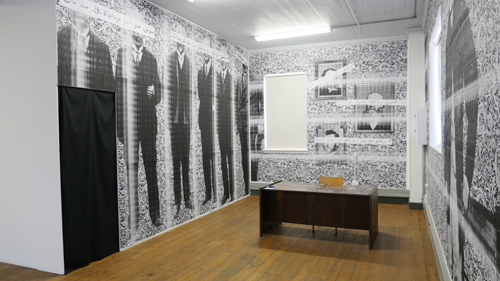
Exhibition: Re(as)sisting Narratives in South Africa
Exploring lingering legacies of colonialism between South Africa and the Netherlands through engaging with contemporary artists from both countries

Exhibition: Re(as)sisting Narratives
Exploring lingering legacies of colonialism between South Africa and the Netherlands through engaging with contemporary artists from both countries
Network
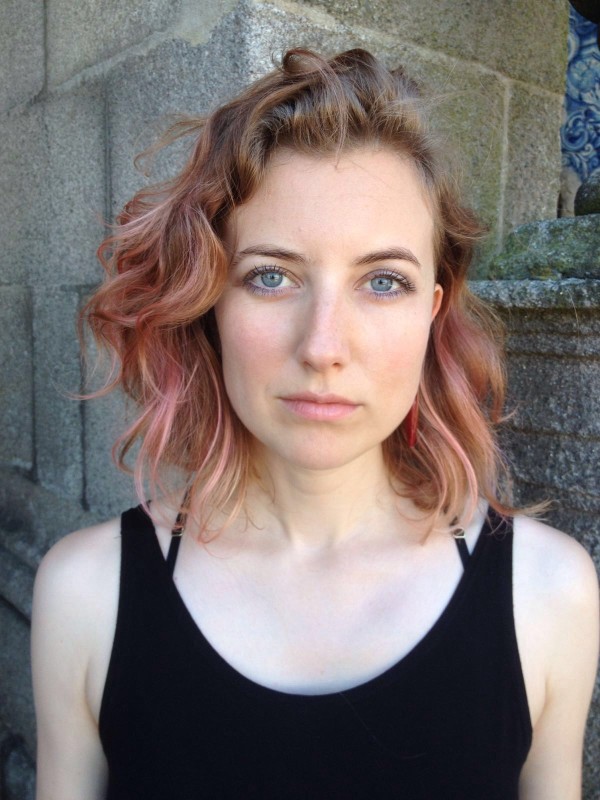
Judith Westerveld
Artist
